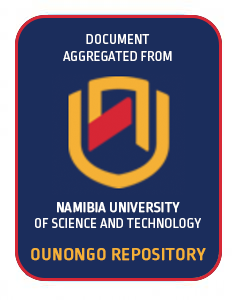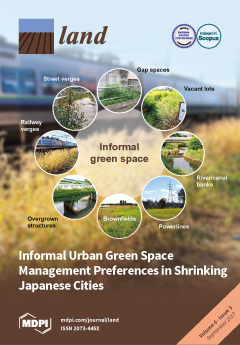couverture du sol
AGROVOC URI:
Land use land cover change in the fringe of eThekwini Municipality: Implications for urban green spaces using remote sensing
This study sought to determine a 22-year past and future land use and land cover trend and its implication on green spaces in an eThekwini Municipal Area’s peripheral settlement. Results show a consistent pattern of decline in land use and land cover types associated with green spaces and an increase in impervious surfaces. The study is taken to confirm recent urban bio-physical transformation and anticipated increased pressure on peripheral urban green spaces in eThekwini Municipality.
Kenya GIS Data
You can carry out your own analyses on poverty and ecosystem services with the GIS data made available, some of them being publicly released for the first time. All data are accompanied by metadata.
Mapping of the BCLME shoreline, shallow water & marine habitats: Physical mapping project.
Project in collaboration with the Benguela Environment Fisheries Interaction & Training Programme (BENEFIT) for the Benguela current Large MArine Ecosystem (BCLME) Programme.
Assessing potential to produce final ocean colour maps of Namibia`s marine environment: Final report for BCLME/UNOPS PCU/POLYTECH/05/01 MODIS.
Land‐Use and Land‐Cover Change in the Páramo of South‐Central Ecuador, 1979–2014
Land use and land cover were mapped between 3500 and 5000 meters above sea level m.a.s.l. in the Río Chambo basin in south-central Ecuador from Landsat MSS, TM, ETM and OLI imagery acquired between 1979 and 2014. The area mapped has been dominated by páramo and a variety of agricultural land uses since 1979. The main land-use transitions have been from páramo to agriculture, native forest to páramo and agriculture, and agriculture back to páramo.
Fire Data as Proxy for Anthropogenic Landscape Change in the Yucatán
Fire is one of the earliest and most common tools used by humans to modify the earth surface. Landscapes in the Yucatán Peninsula are composed of a mosaic of old growth subtropical forest, secondary vegetation, grasslands, and agricultural land that represent a well-documented example of anthropogenic intervention, much of which involves the use of fire. This research characterizes land use systems and land cover changes in the Yucatán during the 2000–2010 time period.
Land Cover Change in Northern Botswana: The Influence of Climate, Fire, and Elephants on Semi-Arid Savanna Woodlands
Complex couplings and feedback among climate, fire, and herbivory drive short- and long-term patterns of land cover change (LCC) in savanna ecosystems. However, understanding of spatial and temporal LCC patterns in these environments is limited, particularly for semi-arid regions transitional between arid and more mesic climates.
Mapping Land Cover and Estimating the Grassland Structure in a Priority Area of the Chihuahuan Desert
A field characterization of the grassland vegetation structure, represented by the coverage of grass canopy (CGC) and the grass height, was carried out during three years (2009–2011) in a priority area for the conservation of grasslands of North America. Landsat Thematic Mapper (TM5) images were selected and the information of reflectance was obtained based on the geographical location of each field-sampling site.
Constraining the Deforestation History of Europe: Evaluation of Historical Land Use Scenarios with Pollen-Based Land Cover Reconstructions
Anthropogenic land cover change (ALCC) is the most important transformation of the Earth system that occurred in the preindustrial Holocene, with implications for carbon, water and sediment cycles, biodiversity and the provision of ecosystem services and regional and global climate. For example, anthropogenic deforestation in preindustrial Eurasia may have led to feedbacks to the climate system: both biogeophysical, regionally amplifying winter cold and summer warm temperatures, and biogeochemical, stabilizing atmospheric CO 2 concentrations and thus influencing global climate.
Modeling Land Use and Land Cover Changes and Their Effects on Biodiversity in Central Kalimantan, Indonesia
Land use and land cover (LULC) change causes biodiversity decline through loss, alteration, and fragmentation of habitats. There are uncertainties on how LULC will change in the future and the effect of such change on biodiversity. In this paper we applied the Land Change Modeler (LCM) and Integrated Valuation of Ecosystem Services and Tradeoffs (InVEST) Scenario Generator tool to develop three spatially explicit LULC future scenarios from 2015 to 2030 in the Pulang Pisau district of Central Kalimantan, Indonesia.







